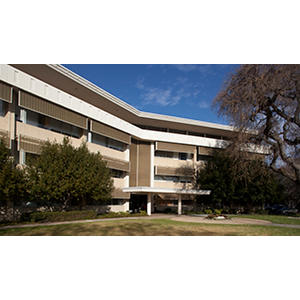
Caroline Okorie, MD
Clinical Associate Professor
Pediatric Pulmonology
Mi acercamiento
I am both a pediatric pulmonologist and sleep specialist, so I have the opportunity to care for a diverse group of patients with a variety of health issues. I provide care for patients starting from when they're neonates up until they're adults. I enjoy educating patients, families and communities about how to best partner with their medical team to optimize our patients' health and quality of life. I strive to empower patients and families to feel that we are all part of a team working to achieve the best outcome. Everyone should feel like they're part of the solution.
When I see patients who have a sleep issue, I blend traditional sleep medicine with integrative medicine principles to offer a holistic approach to treating sleep disorders in children. I work to provide personalized care that addresses not only the physical but also the emotional and environmental factors affecting sleep. These can include discussion about nutrition, stress management, and exercise.
Localización

770 Welch Road, 3rd Fl
Palo Alto, CA 94304
Mapas, direcciones y estacionamiento
Teléfono : (844) 724-4140
Fax : (650) 721-2884

1195 West Fremont Avenue
Sunnyvale, CA 94087
Mapas, direcciones y estacionamiento
Teléfono : (844) 724-4140
Fax : (650) 721-2884
Experiencia
Asthma
Bronchiectasis
Bronchopulmonary Dysplasia
Childhood Asthma
Chronic Cough
Chronic Lung Disease in Infancy
Chronic Ventilator Management
Ciliary Dyskinesias
Congenital Lung Disease
Cystic Fibrosis
Functional Disorders (Eating, Feeding, Toileting and Sleep)
Interstitial Lung Disease
Laryngomalacia
Laryngomalacia Tracheomalacia
Laryngomalacia Tracheomalacia
Neuromuscular Disease
Pneumonia
Pulmonary Hypertension
Pulmonary Vascular Disease
Sleep Disorders
Sleep Medicine
Trabajo y educación
University of Arizona College of Medicine, Tucson, AZ, 05/15/2010
Oregon Health & Science University, Portland, OR, 06/30/2014
Stanford University School of Medicine - Office of Graduate Affairs - Postdoctoral Affairs, Stanford, CA, 06/30/2017
Stanford University School of Medicine - Office of Graduate Affairs - Postdoctoral Affairs, Stanford, CA, 06/30/2018
Pediatrics, American Board of Pediatrics, 2013
Pediatric Pulmonology, American Board of Pediatrics, 2018
Sleep Medicine, American Board of Pediatrics, 2019
Idiomas
English
Conéctese con nosotros:
Descarga nuestra App: